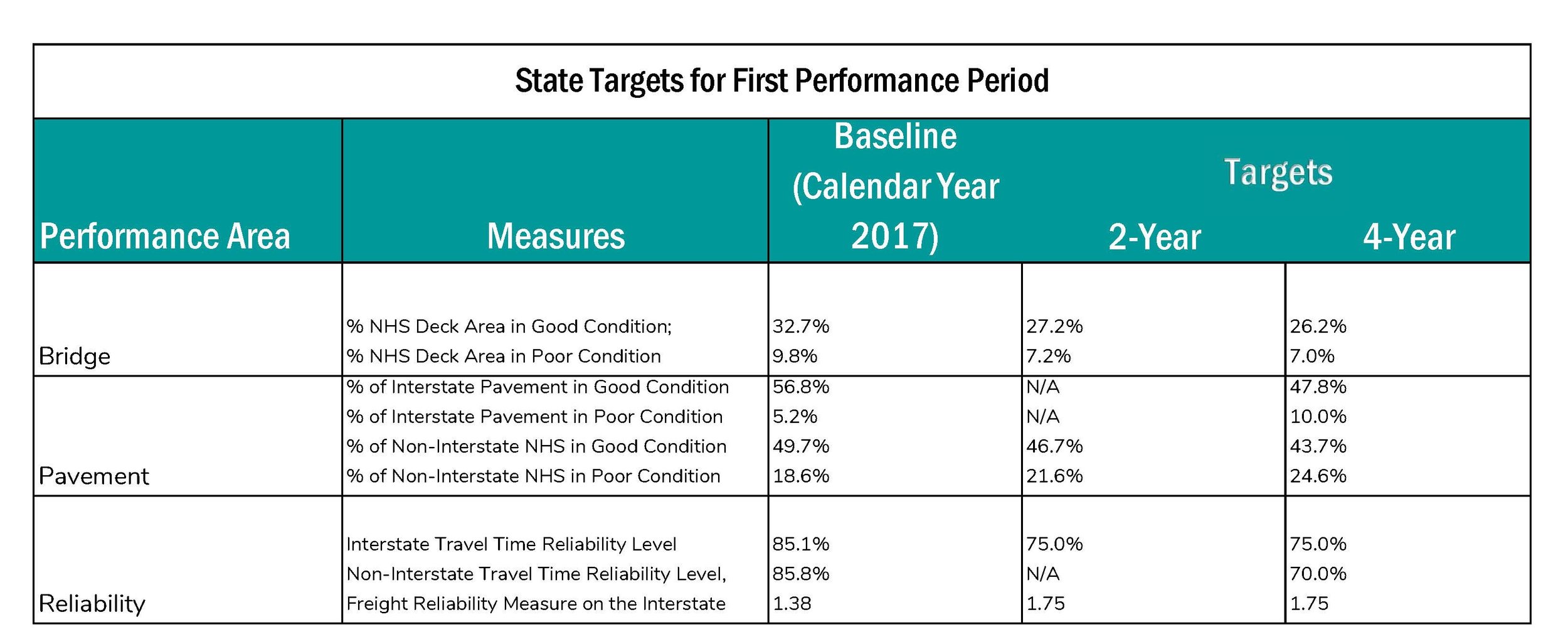BRIDGE CONDITION
Title 23 CFR §650, Subpart C - National Bridge Inspection Standards (NBIS), defines a bridge as a structure carrying traffic with a span greater than 20 feet and requires that all bridges be inspected every two years to monitor and report condition ratings. The FHWA requires that for each applicable bridge, the performance measures for determining condition be based on the minimum values for substructure, superstructure, deck, and culverts. The FHWA further requires counting this condition by the respective deck area of each bridge and express condition totals as a percentage of the total deck area of bridges in a state.
Performance Measures for Pavement and Bridge Condition
This final rule, which took effect on May 20, 2017, established measures for State DOTs to carry out the National Highway Performance Program (NHPP) and to assess the condition of pavements on the non-Interstate National Highway System (NHS); pavements on the Interstate System; and bridges carrying the NHS, including on- and off-ramps connecting to the NHS.
The performance measures under this rule are:
Percent of NHS Bridges in Good Condition
Percent of NHS Bridges in Poor Condition
Percentage of Interstate pavements in Good Condition
Percentage of Interstate pavements in Poor Condition
Percentage of non-Interstate NHS pavements in Good Condition
Percentage of non-Interstate NHS pavements in Poor Condition
As of November 2021 (i.e. 2-Year and 4-Year reporting cycle), MATS Policy Committee elected to support the MDOT targets for the areas of Pavement Performance, Bridge Condition, and Travel Time Reliability. These targets are shown below. To support these targets, MATS will continue ongoing coordination with the State and other safety stakeholders to address areas of concern, and agreeing to plan and program projects that contribute toward meeting these State targets.
The graphic below represents the revised state 4-year bridge targets, as supported by MATS in 2021.
Pavement Performance/Bridge Condition/Travel Time Reliability Performance Measures Role in the TIP Process
MATS takes these targets into account when preparing the TIP project list via the project selection process. Through annual PASER surveys, MATS maintains a close partnership with local implementing agencies with regard to monitoring pavement performance. In addition, bridge preservation is an important consideration for the MATS area. There have been numerous bridge projects in our area, such as the M-20 bridge replacement project, which have resulted in an overall improvement in bridge condition in the MATS region.
MATS Specific Data
Target Setting Facts for MPO’s:
• Condition improvement is estimated based on projects programmed through the MDOT capital program, both MDOT and local agency. The improvement is applied the year after the date of letting.
• Deterioration is estimated based on comparing network wide deterioration rates to the age and condition of each major component of each structure.
• The targets are highly dependent on the deck area of bridges that fall to poor, and so the smaller the inventory considered, the higher potential for a single bridge to skew results. The statewide targets are assumed to be less variable than an individual MPO.
For more information on the subject of performance measures, you may be interested in this report from the Center for Automotive Research that goes into the reasoning behind the process for arriving at and promulgating targets:



